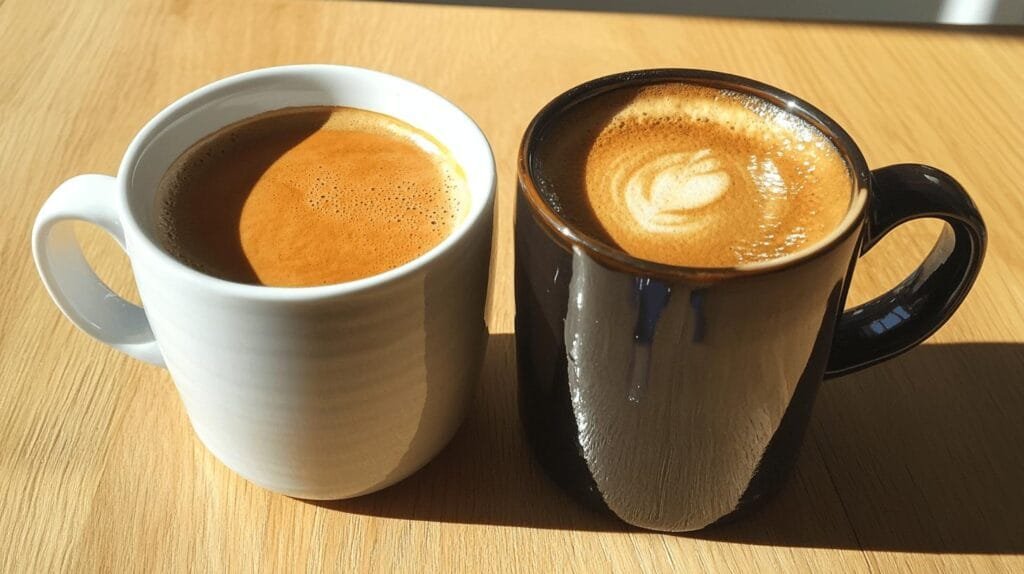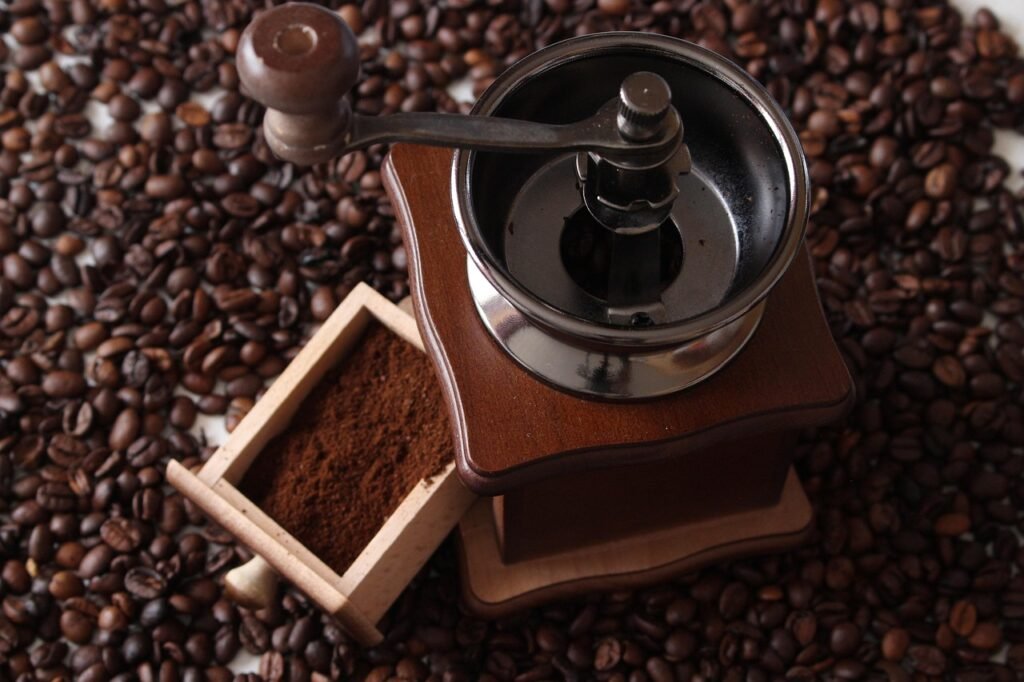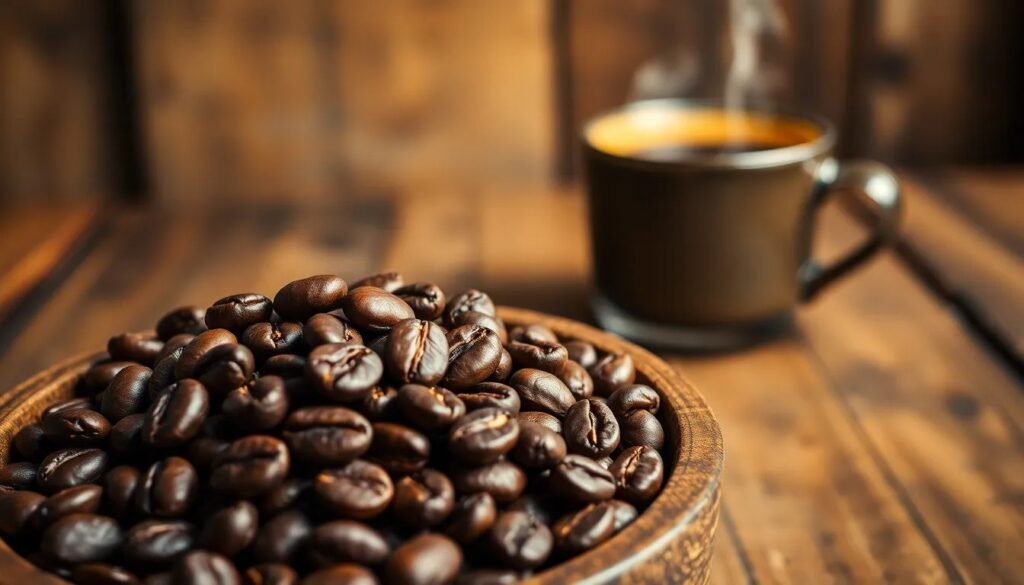Is espresso your go-to energy booster, or do you prefer a classic cup of drip coffee to kickstart your day? You might think that espresso, with its bold and concentrated flavor, packs a bigger caffeine punch. However, when you consider the typical serving sizes, drip coffee often delivers more caffeine in a single cup. This article delves into the details, comparing the amount of caffeine in coffee vs espresso, while shedding light on how volume and concentration play a critical role in your caffeine experience.
Comparing Caffeine Levels in Coffee and Espresso
Espresso and drip coffee are popular caffeinated drinks, each with different caffeine levels. A 1-ounce shot of espresso has about 63 milligrams of caffeine. Meanwhile, an 8-ounce cup of drip coffee contains roughly 95 milligrams. This difference is largely due to serving size, as espresso is served in smaller portions.
The caffeine intake from coffee varies by serving size. Espresso is concentrated, giving a quick caffeine boost in a small amount. Drip coffee is consumed in larger volumes, resulting in a higher total caffeine intake per serving. If you’re looking for a bigger caffeine hit over time, an 8-ounce cup of drip coffee generally offers more than a single shot of espresso.
The concentration difference between espresso and drip coffee provides different caffeine experiences. Espresso delivers a strong, quick jolt per ounce, ideal for those who want immediate energy. Drip coffee, with its larger volume, offers a gradual and sustained caffeine release. This makes it perfect for those who prefer sipping their coffee throughout the day.
Factors Influencing Caffeine Content
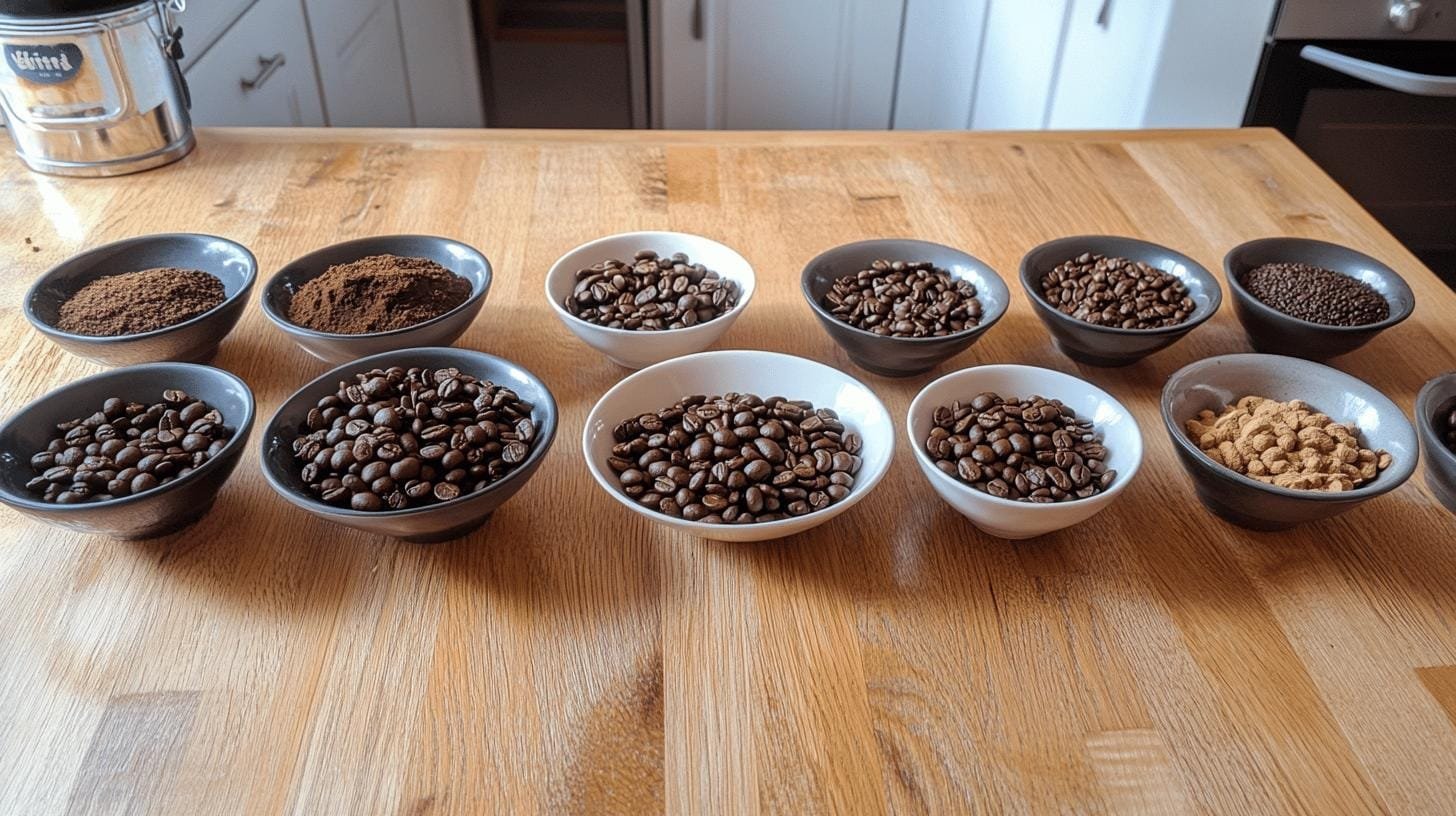
Brewing methods greatly influence caffeine content in coffee and espresso. Espresso is made by forcing hot water through finely-ground coffee at high pressure. This creates a more concentrated drink with more caffeine per ounce. Drip coffee, however, is brewed by letting hot water drip slowly through coarsely-ground coffee. This extracts caffeine over a longer time, resulting in a larger volume with more total caffeine. These methods not only affect caffeine content but also the drink’s flavor and strength.
Coffee Bean Types and Roast Levels
The type of coffee bean and its roast level affect caffeine content. Arabica beans, used in specialty coffees, usually have less caffeine than Robusta beans, found in instant coffee and espresso blends. Roast level matters too; lighter roasts keep more caffeine than darker ones, as roasting reduces caffeine content. Though darker roasts seem stronger, lighter roasts typically have more caffeine. These factors are key in figuring out which coffee suits your caffeine preferences.
- Coffee Bean Type
- Roast Level
- Grind Size
- Brewing Time
- Brewing Method
Adjusting these factors lets coffee lovers control their caffeine intake. Choosing a lighter roast with a finer grind can boost caffeine content. Adjusting brewing time affects caffeine extraction too. By understanding these variables, you can create a coffee experience that matches your caffeine desires, whether for a strong espresso jolt or a milder drip coffee effect.
Brewing Methods: Espresso vs. Drip Coffee
Espresso is made by pushing hot water through finely-ground coffee at high pressure. This results in a dense, concentrated drink with more pronounced caffeine per ounce. The pressure and grind size ensure optimal extraction, delivering a powerful caffeine kick in a small volume. This method is favored for its ability to provide quick energy.
In contrast, drip coffee involves pouring hot water over coarsely-ground coffee. It drips slowly through a filter, leading to a larger serving size with less caffeine per ounce. This slower process allows for balanced flavors, preferred by those who like sipping more over time. Drip coffee’s extended brewing time results in a more gradual caffeine release.
The differences in brewing methods impact caffeine extraction. Espresso’s rapid method extracts caffeine efficiently in concentrated form. Drip coffee focuses on volume and time, leading to more caffeine per cup but less per ounce. These methods cater to different preferences for caffeine and flavor experience.
The Role of Serving Size in Caffeine Consumption
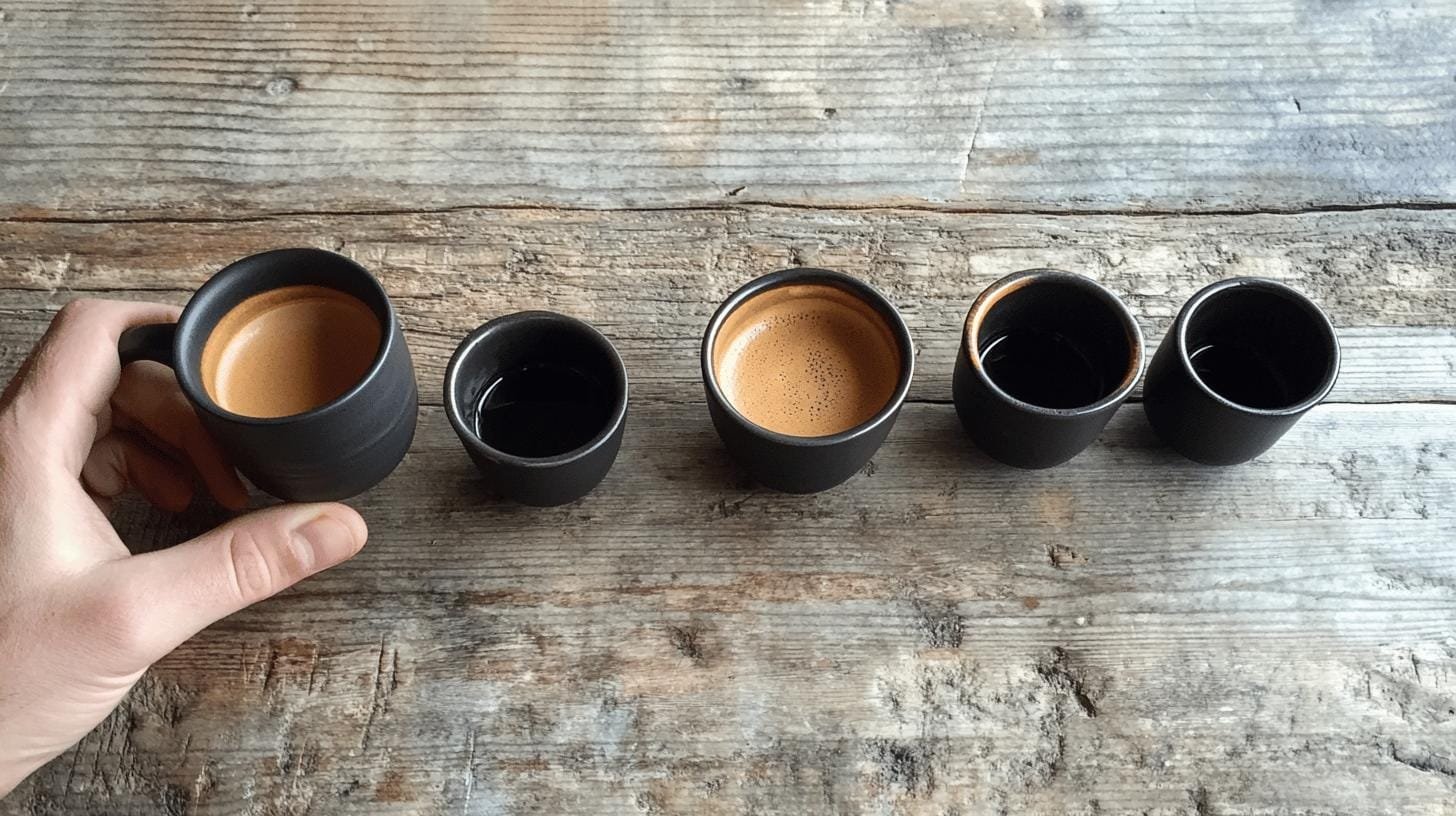
Serving size affects caffeine consumption in coffee and espresso. Typically, a 1-ounce shot of espresso has about 63 milligrams of caffeine. An 8-ounce cup of drip coffee contains about 95 milligrams. Espresso’s smaller serving size offers a concentrated caffeine experience. Drip coffee’s larger volume provides a higher total caffeine intake. This difference is crucial for managing caffeine consumption, whether you seek a quick jolt or a gradual release.
- Single Espresso Shot (1 oz)
- Double Espresso Shot (2 oz)
- Standard Drip Coffee Cup (8 oz)
- Large Drip Coffee Cup (12 oz)
Caffeine measurement can vary by serving size. Smaller servings, like espresso shots, challenge accurate caffeine measurement due to concentration. Larger servings, like a 12-ounce drip coffee, allow for more consistent caffeine distribution, making measurement easier. This variability highlights how serving size can influence caffeine data and consumer choices.
Common Misconceptions About Coffee and Espresso Caffeine
Does espresso have more caffeine than coffee? No, a common misconception. Espresso seems potent due to its form, but drip coffee generally contains more caffeine in standard servings. A 1-ounce shot of espresso has about 63 milligrams of caffeine, while an 8-ounce drip coffee has 95 milligrams. Drip coffee’s larger size means more caffeine despite espresso’s flavor profile.
Does darker roasted coffee have more caffeine? No, roasting doesn’t increase caffeine content. Many think darker roasts have more caffeine, but they’re not correct. Lighter roasts retain more caffeine; roasting lowers it. Darker roasts seem stronger because of their bold taste, not extra caffeine.
Believing these myths can lead to wrong coffee choices. People seeking caffeine might choose darker roasts or espresso, thinking they’re stronger. Knowing real caffeine content helps make better decisions. Dispelling these myths lets coffee lovers choose based on true caffeine preferences.
Final Words
Exploring the amount of caffeine in coffee vs espresso reveals intriguing insights. Caffeine content differs not only through serving sizes but also through brewing methods and bean characteristics. Recognizing these distinctions helps consumers tailor their coffee experience.
Unraveling misconceptions about caffeine content can elevate one’s understanding of coffee. Finding the right coffee balance involves considering all variables affecting caffeine content. Enjoying a cup becomes more nuanced when equipped with knowledge about caffeine dynamics. Whether choosing espresso’s intensity or coffee’s larger servings, informed choices enhance the caffeine journey.
FAQs
How much caffeine is in coffee compared to an espresso shot?
A single espresso shot contains approximately 63 milligrams of caffeine, while an 8-ounce cup of drip coffee has about 95 milligrams, making drip coffee higher in caffeine due to its larger volume.
Is espresso stronger in caffeine than coffee?
Espresso is more concentrated in caffeine per ounce, but a standard serving of drip coffee contains more caffeine overall because it is typically consumed in larger volumes.
How many espresso shots equal a cup of coffee in terms of caffeine?
It takes roughly one and a half espresso shots to equal the caffeine content of an 8-ounce cup of drip coffee, aligning the total caffeine intake more closely.
Can brewing methods alter caffeine content in coffee and espresso?
Brewing methods, such as high-pressure espresso brewing or slower drip coffee brewing, significantly influence caffeine content, affecting both flavor and caffeine extraction.
Is it true that darker roasted coffee has more caffeine than lighter roasts?
Darker roasts do not contain more caffeine than lighter roasts; the roasting process reduces caffeine content slightly, making roast level less impactful on caffeine levels.



